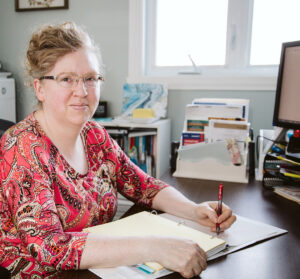After some house renovations basically took over my life and schedule for the past couple of months (and left me with tendonitis in my elbow), I am ready to start a new blog series called “Translation as Renovation”. We’ll be drawing parallels to help us internalize 9 best practices for translation. When we translate, it is like we are “renovating” a text; we’re rearranging words so that it will flow beautifully in another language.
There are three best practices in each of three Quality Aspects that need to be evident in our translations: Fidelity, Readability and Conformity. So the first three blog posts in this series will deal with best practices related to Fidelity.
- Fidelity means the translation matches the source text. Before we could even start our renovation, we needed detailed drawings which served as our “script” for the renovation. We expected the contractor, electrician and plumber to put things where they were supposed to go… and it’s the same in translation. As translators, we don’t have the right to remove, add or change things: we are not the author. Our responsibility is to faithfully reproduce in another language what the author wrote in his or her language.
 Best Practice 1 is “Pursue Excellence”. I’ll confess that there were many times I got frustrated with our contractor. It seemed like he or his workers would get in a hurry to finish something because it was time to clock out (construction workers’ hours are very regulated in Quebec). For example, one worker spent almost a week filling drywall joints, and then someone else did a quick sanding job that was haphazard at best. So our beautifully constructed walls ended up with numerous imperfections that are still visible after painting. I honestly think we could have done a better job sanding the walls ourselves, and we are amateurs! But that’s what happens when you get in too much of a hurry.
Best Practice 1 is “Pursue Excellence”. I’ll confess that there were many times I got frustrated with our contractor. It seemed like he or his workers would get in a hurry to finish something because it was time to clock out (construction workers’ hours are very regulated in Quebec). For example, one worker spent almost a week filling drywall joints, and then someone else did a quick sanding job that was haphazard at best. So our beautifully constructed walls ended up with numerous imperfections that are still visible after painting. I honestly think we could have done a better job sanding the walls ourselves, and we are amateurs! But that’s what happens when you get in too much of a hurry.
The best strategy in pursuing excellence in translation is to SLOW DOWN. Do not try to rush the process. When I was doing my first degree in translation (B.A.), our professors told us that a good pace to work toward was about one page (approximately 250 words) per hour. This gave us enough time to look up terms and expressions that we were not familiar with, and to do our best translation work.
When I tell you to spend an hour per page on translation if you are just beginning, you will probably guess that I am NOT in favour of automatic translation. And you would be right! A machine will never be able to think completely like a human, to understand nuances and emotions. It takes a translator with extensive training and experience to correct the mistakes made in automatic translation, because they know which traps to watch out for. This activity is called post-editing and, frankly, it’s not very enjoyable!
So let’s take the time we need to do the best translation possible, to do self-revision, and to use an editor. Let’s all keep learning and improving… and Pursue Excellence!
Have a great day!
Liane 🙂
www.LearnTranslation.com
www.NonprofitTranslation.org
